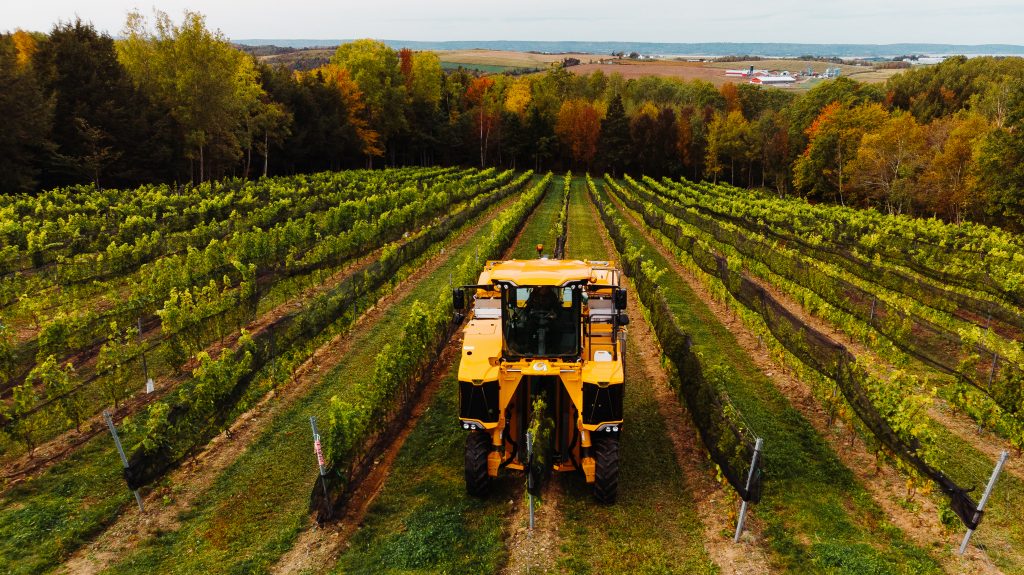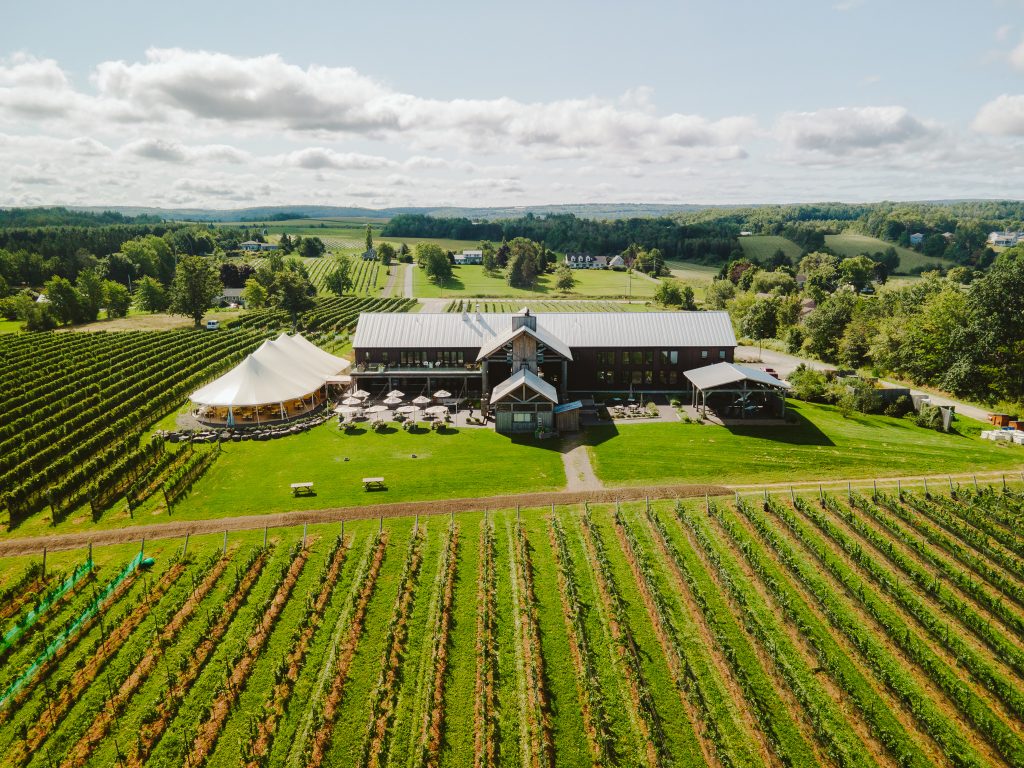
Nova Scotia caught my eye for traditional method sparkling wines, but back in 1611 it was red Bordeaux varieties which were planted by French settlers in a place called Bear River. This gives Nova Scotia the longest viticultural history in Canada.
Not surprisingly the cold climate is better suited to white grapes, so when the modern wine trade began to flourish in the 1980s after Roger Dial released a wine from Grand Pré the province’s first farm/winery, it was hardy hybrids leading the field. There are now 58 growers including farm/wineries.
The trade has been slow to develop, partly a legacy of prohibition – in the ‘Eighties there were still some dry areas – but largely access to market. The Canadian wine system obliges producers to export to the rest of Canada via the LBCO (liquor control board) limiting their domestic market to a population of about 1 million people, to whom wine is sold principally from the cellar door.
So what defines a Nova Scotia wine? Certainly fresh acidity and lively energy. The best will have a light salty note. The vineyards are planted within spitting distance of the ocean with most not more than 20km away. Surrounded by large bodies of water Nova Scotia has a cool maritime climate moderated on the Atlantic side by the Gulf Stream; while on the other the Bay of Fundy has one of the world’s highest tides. The huge volume of cold water going in and out acts like a giant air pump delaying the bud break until the end of June, lowering the risk of spring frost, but all the tidal basins are effective in moving air around and Nova Scotia is less likely to suffer from the severe, vine killing cold, of Ontario. The ameliorated climate allows the season to stretch, providing a nice long hang time with harvest taking place from mid October into November.
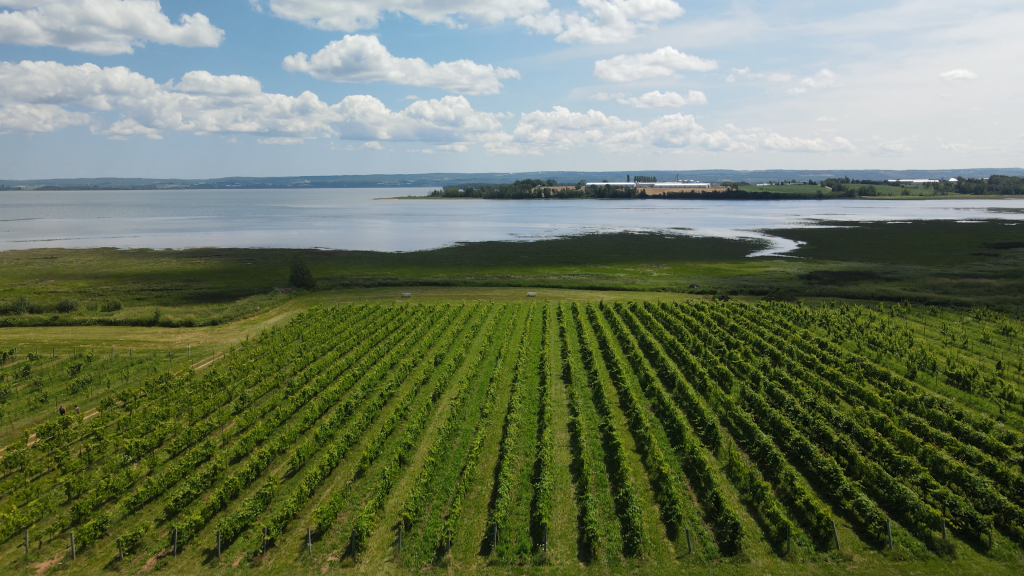
The soils are generally sandy loam, glacial till left in the wake of glacier retreat. There’s also some basalt in a volcanic ridge called North Mountain. Here the top soil is heavy and rich and the meso-climate warmer thanks to the south facing slope. North Mountain scales all of 70m, but some of Nova Scotia’s vineyards are below sea level. “It’s quite good for the Dijon clone of Chardonnay here,” says Simon Refuse head winemaker of Blomindon Estate “but the wines don’t stand up to much oak.”
Let’s consider still wines later. Nova Scotia’s Chardonnay, with its high acidity and just sufficient ripeness, is ideally suited to traditional method sparking wine production.
When land was still cheap in 1999, Gerry McConnell CEO of a gold and diamond mining company, bought a 75 hectare plot in the Gaspereau Valley with the ambition to make a sparking wine. In this he was assisted by Peter Gamble, Canadian winemaking guru, and Raphael Brisbois Champagne native and specialist. Benjamin Bridge was the first Nova Scotia wine farm to plant Chardonnay specifically for a sparking wine and has become a benchmark winery for this style over the past twenty years.
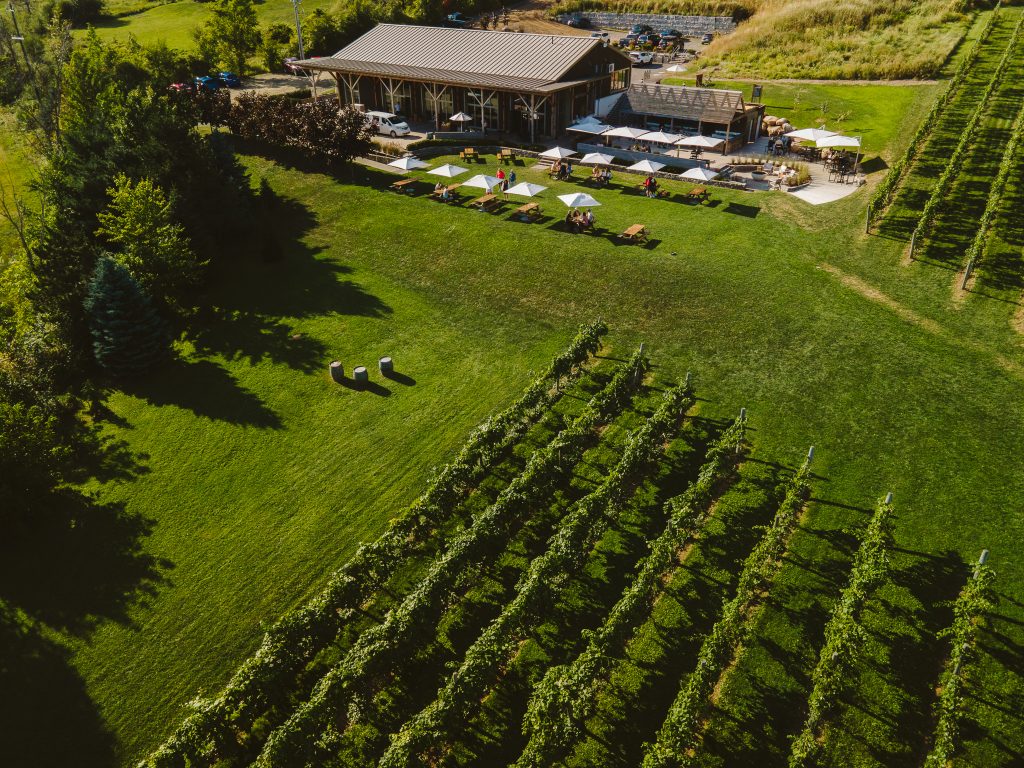
Benjamin Bridge’s wines have low dosage. This is typical in Nova Scotia where sugar ranges from 3 g/l to 8g/l. I prefer a low or no dosage style, but it’s all about balance. Refuse comments “In the UK you balance high acidity in your sparkling wines with high dosage, but the acidity we get in Nova Scotia just doesn’t work with much dosage so we prefer to hold the wine a long time on lees and wait.” Most producers rely upon an extended period sur lie to balance the acidity, hence their current release of traditional method sparkling wine is 2016 and 2017.
*Sparkling highlights
*Lightfoot & Wolfville Brut 2017
100% chardonnay; 12%; TA 7.53. Stainless steel ferment. Full Malo. 46 months on lees. 8 gl/l dosage. A delicate wines which is floral and citrusy. Very fresh and the mousse is fine. (Propeller in the UK. £34)
Benjamin Bridge Brut 2017
100% Chardonnay. 12% TA 7.7 g/l. Fermented in large oak barrels with indigenous yeast. Full malo and 8 months elevage. 4 years on lees. Dosage 3 g/l. Scrumptious aroma. Nicely balanced palate with light notes of biscuit and hay. Good tension and fine bubbles. Quite long and rather refined. The 2016 was very attractive too. (Stannary Wines in the UK. £38)
There are fewer sparkling wines made with red fruit than with Chardonnay. Pinot Noir is tricky in Nova Scotia. Pinot Meunier is easier and some Voltis, the hybrid newly permitted in Champagne, is being planted. The rosé wines are pretty but lack depth and finish.
Benjamin Bridge NV Brut Rosé
55% L’Acadie Blanc, 30% Chardonnay; 15% Pinot Noir. 12%. TA 8 g/l.
A house blend of younger vines and reserve wines. A light rose petal aroma, this has a simple palate with light strawberry notes. Attractive, but straightforward. (Stannary. £26)
Lightfoot & Wolfville Brut Rosé 2019
100% Pinot Noir. 11%. TA 7.48 g/l. Combination of de-stemming and whole cluster. 100% malo and eleven months on lees. Dosage 4 g/l. This is a step up on the previous rosé. Light cherry perfume. Lively red fruit palate; lightly structured and delicate. (Propeller £35)
Blomindon Blanc de Blanc 2011
100% Chardonnay. Made with the oldest vines. 11%. TA 12 g/l. Fermented in stainless steel. Bottled august 2012 and disgorged Feb 2022. Dosage 6 g/l.
Mellow toasty bouquet with cream and caramel notes, while the palate is appley something between bruised apple and toffee apple, which I wasn’t sure I liked. It has some bite and a tacky texture, which becomes more sappy. It’s certainly piquant and the finish stretches into a long lime-citrus line. It grew on me. (Seeking UK representation. RRP £56)
Blomindon’s winemaker Refuse says 2011 was a very cold year, excellent for sparkling. (TA is 12 g/l). “Malolactic was not a good idea this year so we had to wait 12 years to release it.”
*Blomindon Grande Reserve 2008
100% Chardonnay. 11.4%. TA 7.8 g/l. pH 3.17. Bottled 2009. Disgorged Feb 2022. Dosage 4 g/l.
Rich, assertive bouquet in which yeasty, miso notes combine with truffle, acorns and – oddly – asparagus. A grippy, salty, savoury palate. Fresh and intense. An assured finish which is persistent and saline. Finely beaded, consistent mousse. This is rather good, but also rather expensive. (Seeking UK representation. RRP £78.50)
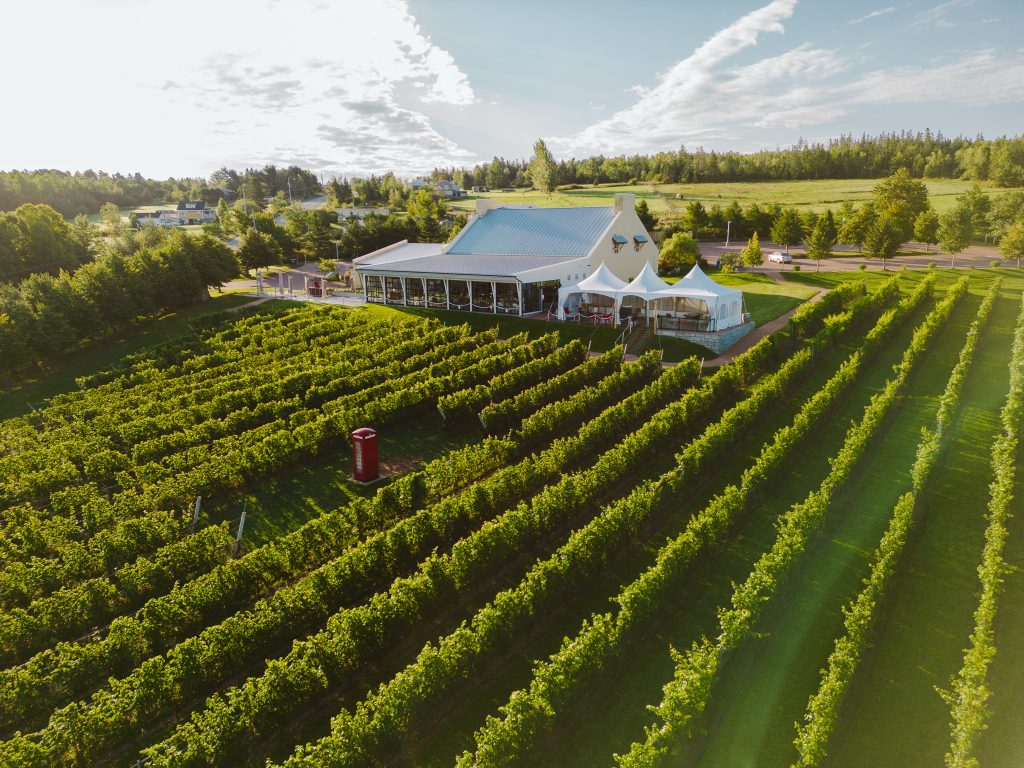
Chardonnay
Although Chardonnay, which represents about 7% of planting Nova Scotia was introduced for sparkling wine production and Champagne clones were selected for this, recent warmer summers have seen an increasing popularity of of single varietal still Chardonnay. September makes or breaks the decision to produce one. From what I gather 2016 was a warmer vintage than 2017. 2019 was a poor vintage, while 2020 and 2021 were quite good.
Most producers wouldn’t age Chardonnay in oak, wisely preferring stainless steel, but there is a trend for using 500l barrels. Simon Refuse points out that Blomindon don’t produce a still Chardonnay every year. Moreover only in the warmest, would it go through a malolactic fermentation. He is afraid the high level of malic would produce too much “milky/yoghurt” lactic acidity. Cold years in Burgundy have high lactic acidity after MLF, but also more body and density. Maybe the fear is more about the balance than the flavour profile of lactic acid.
Luckett Vineyards Unoaked Chardonnay 2021
12% TA 7.6 g/l. RS 8 g/l. Bright, juicy and nippy. Light and tight with a straight line. Lively, even nervy. Shiver of minerality to finish. It’s an very attractive wine from Luckett Vineyards which were established in 2000 by greengrocer Pete Luckett and have 100 hectare in the Gaspereau Valley and Bay of Fundy. (Seeking UK representation. RRP £34.25)
Blomindon Reserve Chardonnay 2020
13%. TA 5.2 g/l. pH 3.48. Partially barrel fermented with full MLF and aged 12 months in oak. This is mainly from the old block planted in 1996 near the sea. The farm is located on the edge of the Minas basin in the Annapolis Valley and some vineyard stretch down to the water. I found this rather oak dominated with a caramel aroma and butterscotch on the palate. It’s rounded and creamy. They are moving to using 500 litre barrels, which is a good move.
Tidal Bay
I can’t write this blog without including Tidal Bay, the first and only appellation.. not for a specific place within Nova Scotia, but for a style of wine. Tidal Bay wines have lowish alcohol and fresh acidity and must be a blend of four varietals, drawn from a list of twenty.
Each producer submits their blends to a tasting and technical panel. Tidal Bay cannot have an ABV of more than 11.5% or less acidity than 7.5 g/l (most have 8-10 g/l). Techniques including oak or lees ageing provoke an instant fail. Failure is not uncommon. I gather about 50% of samples are rejected, necessitating the producer to go back and create another sample blend. The goal is to achieve a lightly aromatic, crisp style which reflects the cool maritime climate. Those I tried had an attractive, fresh and saline note with more or less floral and spicy aromatics.
The profile which most appealed was lightly citrusy and saline, but I found some too aromatic and sweet for my palate. Residual sugars hit 10-12 g/l (and for fairly simple wines they are expensive.)
The most popular varieties used are the cold and disease resistant hybrids, which make up the majority of Nova Scotia’s planting. Thirty percent of land under vine is planted to L’Acadie Blanc and 5% a piece to Vidal and New York Muscat. L’Acadie Blanc features strongly in Tidal Bay wines together with Seyval Blanc, Vidal and/or Geisenheim as the four varieties must make up the majority of the final blend.
If the weather is too warm L’Acadie Blanc quickly becomes quite tropical and pineapple in flavour and must be picked straight after the fruit destined for fizz. However it has solid green credentials, requiring fewer sprays than vitis vinifera. Some use it for sparkling, in a simple accessible style, but as I don’t like aromatic sparkling wines, those don’t appeal to me.
Luckett Vineyards Tidal Bay 2021
26% L’Acadie Blanc; 26% Seyval blanc; 26% chardonnay, 22 % Ortega. 11%/ TA 8.9 g/l. 12.5 g/l residual sugar. This was my pick of the bunch. The most restrained of the Tidal Bay wines in the tasting with appealing white peach and floral aromatics and flavours. Fresh, light and airy with a light salt spray.
Tidal Bay has a firm sense of place. It is an attractive ambassador for the wines of Nova Scotia. But if Nova Scotia’s wine producers want to world to take them seriously, this is not the wine by which to define themselves. That requires a more serious calling card. The sparkling wines have the gravitas for the job.
